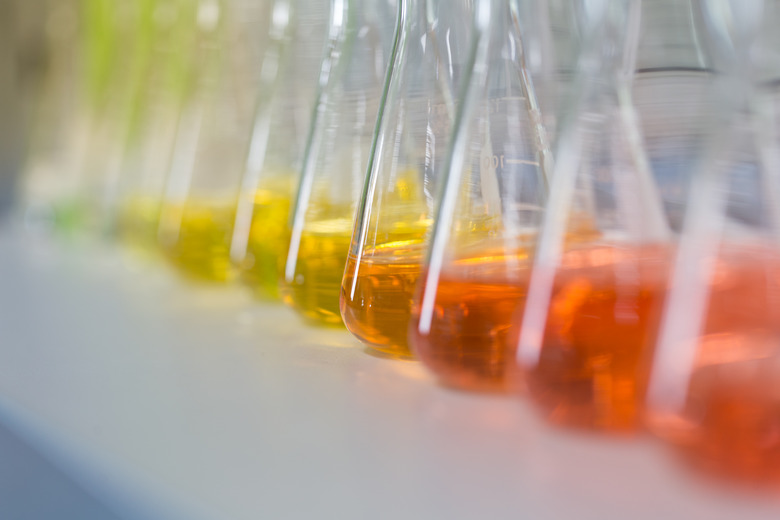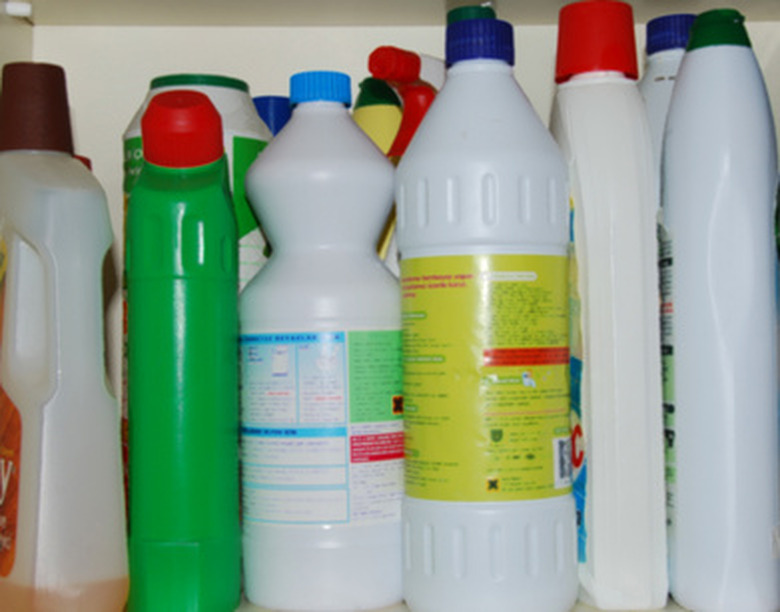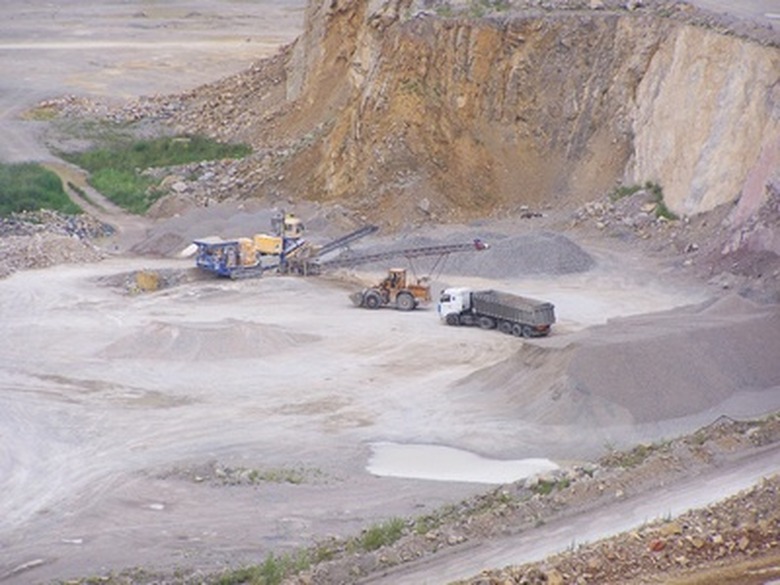List Of Alkaline Chemicals
Alkaline, or base, chemicals have a long history of human use serving as a chemical opposite of acids. From using calcium chloride as chalk and sodium bicarbonate as baking soda to ammonium hydroxide as a cleaning agent, homes across the world find uses for this classification of chemicals.
Acids and bases sit on opposite sides of the pH, or potential for hydrogen, scale. The scale goes from 0 to 14, basically from battery acid to lye, with 7 being neutral. At a high pH level, alkaline chemicals cause severe, caustic burns that are similar to burns caused by acids with a low pH level. Humans commonly use weak bases in their daily lives, while some scientists and manufacturers use their stronger counterparts in industrial and scientific processes. Alkaline chemicals taste bitter and feel slippery to the touch because the oils on human skin saponify, or become soaplike, when they come into contact with a base.
TL;DR (Too Long; Didn't Read)
Baking soda, lye, limestone and aqueous ammonia can be found in many homes across the world, serving different purposes from cleaning to settling stomachs. Humans should take care around some of these chemicals that have a pH high enough to cause severe burns.
Sodium Bicarbonate (Baking Soda)
Sodium Bicarbonate (Baking Soda)
Perhaps the most common alkaline material found in the average home, sodium bicarbonate is a relatively weak base, weighing in at a pH of 8.3. Also known as baking soda, sodium bicarbonate is commonly used as a cooking ingredient where it acts to lower the temperature at which the browning reaction occurs. Humans also use it in products to soothe stomach acid.
Sodium Hydroxide, or Lye
Sodium Hydroxide, or Lye
Sodium hydroxide has a pH that sits around 14, the top of the pH scale. Commonly called lye or soda lye, the chemical reacts rapidly in water, causing a rapid rise in temperature that, in some cases, can ignite combustible materials. Because it is so corrosive, it is rare for commercial outlets to sell it in concentrations in water higher than 50 percent. It has some human uses, including the manufacturing of paper, explosives, dyes and soaps. Many household drain and oven cleaners also contain lye.
Calcium Carbonate (Limestone)
Calcium Carbonate (Limestone)
Found in nature, calcium carbonate, or limestone, has a relatively mild base and a number of human uses. Humans take pills of calcium carbonate to neutralize stomach acid. Children and teachers use it in the form of chalk. Farmers and ecologists use it occasionally to deacidify soil and bodies of water that become too acidic to support life. Limestone makes up around 0.25 percent of the Earth's crust.
Calcium Hydroxide (Slaked Lime, Cement)
Calcium Hydroxide (Slaked Lime, Cement)
Scientists use calcium hydroxide, or slaked lime, as a pH-softening compound, but for centuries, humans used it as mortar between bricks. Humans still use it in this capacity today. It also has some medical applications, such as material for root canal fillings. Humans make the inorganic material by adding lime to water.
Ammonium Hydroxide (Household Ammonia)
Ammonium Hydroxide (Household Ammonia)
Humans create ammonium hydroxide by adding ammonia gas to water, which creates a liquid with a high pH and a stark ammonia smell. Highly poisonous and caustic, ammonium hydroxide can kill or seriously injure human beings. Mostly, commercial producers sell this chemical as household ammonia, a common cleaning agent.
Cite This Article
MLA
Johnson, Doug. "List Of Alkaline Chemicals" sciencing.com, https://www.sciencing.com/list-alkaline-chemicals-7598911/. 26 April 2018.
APA
Johnson, Doug. (2018, April 26). List Of Alkaline Chemicals. sciencing.com. Retrieved from https://www.sciencing.com/list-alkaline-chemicals-7598911/
Chicago
Johnson, Doug. List Of Alkaline Chemicals last modified March 24, 2022. https://www.sciencing.com/list-alkaline-chemicals-7598911/




